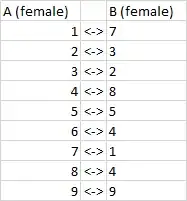I'm sorry if this is the wrong use for stack exchange. I'm sure I will be notified by users if it is.
I have inherited a (female) DSUB9 to (female) DSUB9 cable from a very old project. The pinning perplexes me. What pinning is this? I mean, what is the name of this arrangement? I want to order at least one more. I could just deal with it and make an adapter for some female-to-male cable I have, but I want to understand.
EDIT: It's used to programmed a Cypress Semiconductor MCU CY90F543GSPFR-GE1
The cable is correct by the way, both pin 6 and 8 on one side go to pin 4 on the other. I figured it must be null-modem, but it does not match, as far as I can tell.
